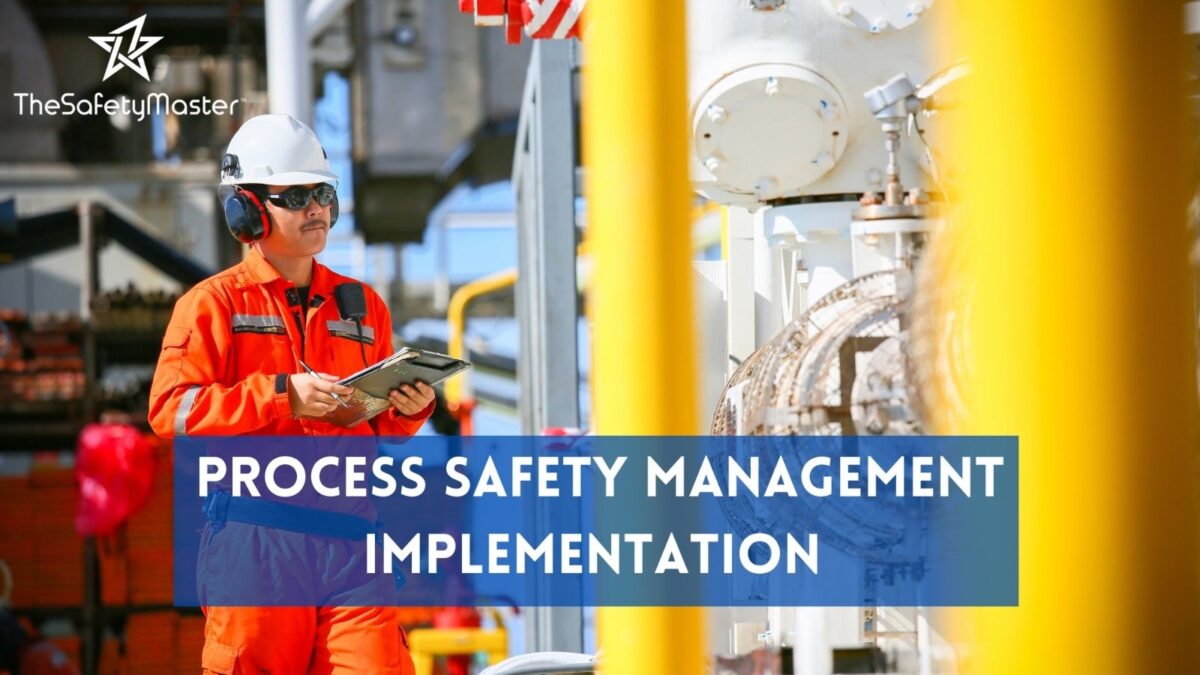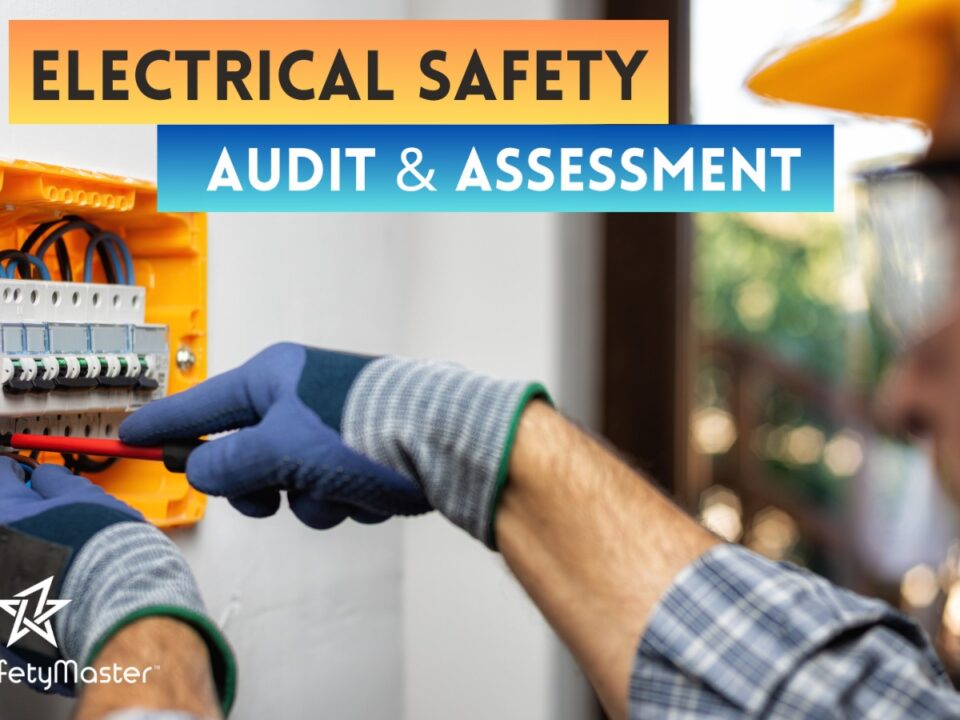Process Safety Management Systems – Best Practices for Effective Implementation and Sustainability

The Link Between Behaviour And Accidents: How BBS Implementation Can Reduce Incidents
November 16, 2023
How HIRA Study & Implementation Revolutionizes Safety Practices in Indian Industries
November 18, 2023In this article, we delve into the crucial matter of process safety management systems and explore the best practices for their effective implementation and long-term sustainability. With the ever-increasing complexity of industrial processes, ensuring the safety of personnel and protection of assets becomes paramount. By uncovering the challenges faced and presenting practical solutions, readers can expect valuable insights that can be applied across various industries. This blog not only promises to unravel the secrets behind successful implementation, but also provides readers with tangible strategies to enhance safety measures and achieve operational excellence.
Introduction
Ensuring the safety and well-being of personnel, facilities, and the environment is of utmost importance in any industrial setting. However, the potential risks associated with handling hazardous materials, operating complex equipment, and managing intricate processes cannot be overlooked. This is where Process Safety Management Systems (PSMS) come into play – a comprehensive framework designed to prevent accidents, minimize risks, and enhance operational efficiency. In this article, we will delve into the best practices for effectively implementing and sustaining a robust PSMS that not only ensures compliance but also fosters a culture of safety within an organization. Throughout this article, we will explore various key elements that contribute to an effective PSMS implementation. From conducting thorough process hazard analyses to establishing performance metrics and promoting ongoing competency development among staff members – we will cover it all. Additionally, we will investigate the significance of maintaining open lines of communication, documenting procedures diligently, reporting incidents promptly for investigation purposes and auditing regularly for continuous improvement. By the end of this article, you can expect to gain valuable insights into how to successfully establish an enduring PSMS that safeguards live and assets while promoting overall organizational resilience
Understanding Process Safety Management Systems
Understanding Process Safety Management Systems: Process Safety Management Systems (PSMS) are comprehensive frameworks designed to prevent and mitigate accidents, incidents, and potential harm in industrial processes. These systems aim to protect employees, communities, and the environment by identifying and managing risks associated with hazardous materials and operations. A well-implemented PSMS enhances safety culture, fosters continuous improvement, and ensures the sustainability of operations.
At its core, a PSMS involves a systematic approach to identify hazards, assess risks, implement controls, and monitor performance. It encompasses various elements such as process design guidelines, operating procedures, maintenance practices, employee training programs, emergency response plans, and more. By integrating these elements into a cohesive system, an organization can create a safety-conscious environment where risks are managed proactively rather than reactively.
One thought-provoking aspect of understanding PSMS is recognizing that its effectiveness lies not only in compliance with regulations but also in going beyond mere compliance. Organizations that embrace PSMS as an opportunity for innovation and continuous improvement often reap additional benefits like increased operational efficiency and enhanced reputation. It is through this holistic approach that businesses can truly integrate safety as an integral part of their operations while reaping the rewards of improved productivity and sustainable growth.
Importance of Effective Implementation
The Importance of Effective Implementation Implementing a robust Process Safety Management (PSM) system is of paramount importance for organizations operating in high-risk industries such as oil and gas, chemical manufacturing, and pharmaceuticals. A well-executed PSM system not only ensures the safety of personnel and the surrounding environment but also safeguards the company’s reputation and economic viability. It serves as a proactive approach to prevent major accidents, protect assets, and enhance operational efficiency.
The significance of effective implementation lies in its ability to identify potential hazards, assess risks, and implement appropriate controls to prevent accidents before they occur. By adhering to best practices in PSM implementation, organizations can create a culture that prioritizes safety over production targets. This results in reduced incidents, lower insurance premiums, heightened employee morale, and improved public perception.
Furthermore, effective implementation of a PSM system enables companies to comply with regulatory requirements while demonstrating commitment towards protecting human lives and the environment. It fosters transparency within the organization by clearly defining roles and responsibilities related to process safety. Consequently, it improves communication channels between management, employees, contractors, regulators, and stakeholders which leads to better decision-making processes.
Overall, by emphasizing the importance of effective implementation at all levels within an organization’s hierarchy – from senior leadership down to frontline workers – companies can ensure that their PSM system becomes an integral part of their daily operations rather than just a set of guidelines or procedures. This cultural shift enhances overall operational excellence while fostering an optimistic work environment where safety is a shared responsibility embraced by all.
Key Elements of a Robust Process Safety Management System
Key Elements of a Robust Process Safety Management System well-designed and comprehensive Process Safety Management (PSM) system is the cornerstone of a safe and successful industrial operation. It establishes a framework that enables companies to identify, assess, and manage potential hazards associated with their processes. Within this framework, several key elements play pivotal roles in ensuring the system’s effectiveness.
Firstly, an accurate process hazard analysis (PHA) is essential. This systematic examination identifies potential hazards in every aspect of the process, enabling proactive measures to be implemented. By analysing each step, from raw material handling to final product delivery, organizations can mitigate risks and prevent accidents before they occur.
Secondly, establishing robust process safety performance metrics enables continuous monitoring and evaluation of safety performance indicators. Metrics such as incident rates, near misses reporting frequency, and compliance with safety procedures help companies track their progress over time while providing insights for targeted improvements.
Lastly, staff training and competency development are crucial aspects of a successful PSM system. By equipping employees with knowledge about hazard recognition, risk assessment techniques, emergency response protocols, and effective communication skills, organizations empower their workforce to actively contribute to maintaining a safe working environment.
By incorporating these key elements into their PSM systems effectively and consistently, companies demonstrate their commitment to both employee well-being and operational excellence. The result is not only reduced incidents but also increased morale among employees who feel valued for their contributions towards maintaining a safe workplace environment.
Conducting a Process Hazard Analysis
Conducting a Process Hazard Analysis Within the realm of Process Safety Management Systems, conducting a thorough Process Hazard Analysis (PHA) is of paramount importance. This comprehensive assessment allows organizations to identify and evaluate potential risks associated with their processes, enabling them to implement effective control measures. The PHA typically involves a multidisciplinary team that meticulously examines various scenarios, equipment failures, human errors, and external factors that could lead to hazardous incidents.
During the PHA process, the team utilizes methodologies such as What-If Analysis, Checklist-Based Approaches, Hazard and Operability Studies (HAZOP), or Failure Modes and Effects Analysis (FMEA). Each approach brings its own unique perspective and allows for a deep dive into potential hazards. By dissecting every aspect of the process systematically, organizations gain invaluable insights into critical safeguards needed to prevent accidents.
Consider this: Through conducting a thorough PHA, companies not only mitigate risks but also enhance operational efficiencies. By identifying potential bottlenecks or inefficiencies in processes, organizations can streamline operations and optimize resource utilization. As a result, employee morale soars while productivity reaches new heights – a testament to the benefits of investing time and effort in conducting comprehensive PHAs.
Establishing Process Safety Performance Metrics
Establishing Process Safety Performance Metrics: Developing meaningful and accurate metrics is crucial for evaluating the effectiveness of a process safety management system. By measuring key performance indicators (KPIs), organizations can identify areas for improvement and gauge their progress towards achieving safety goals. One such metric is the Process Safety Incident Rate (PSIR), which calculates the number of process safety incidents per unit of exposure, providing a quantitative measure of safety performance.
To ensure comprehensive evaluation, it is essential to consider leading and lagging indicators. Leading indicators focus on proactive measures that anticipate potential risks and prevent incidents from occurring. These could include the implementation of process controls, regular equipment inspections, or employee participation in safety training programs. Lagging indicators, on the other hand, assess past incidents and provide insights into historical trends to identify areas where improvements can be made.
However, metrics alone do not guarantee success; their effectiveness relies on accurate data collection and analysis. It is crucial to establish processes for consistent data gathering across departments, ensuring transparency and reliability. Regular reviews should also be conducted to assess metric validity and make necessary adjustments as organizational circumstances evolve. By establishing robust process safety performance metrics, companies can confidently track their progress towards creating a safer work environment while driving continuous improvement throughout all levels of the organization
Staff Training and Competency Development
Staff Training and Competency Development: Ensuring that staff members possess the necessary knowledge and skills to handle potential process safety hazards is crucial for the effective implementation of a Process Safety Management System. Training programs should cover a broad range of topics, including hazard recognition, emergency response procedures, and the proper use of safety equipment. Additionally, competency assessments should be conducted regularly to evaluate individual skill levels and identify areas for improvement.
Creative Content: Imagine a workforce that is not only well-trained but also empowered with the expertise to mitigate process safety risks. Picture a culture where employees are motivated to continuously enhance their competencies through ongoing training initiatives. By fostering a learning environment that emphasizes skill development, organizations can cultivate a team of safety champions who are confident in their abilities and dedicated to upholding high standards of process safety.
Thought-Provoking Content: Reflect on how investing in staff training and competency development can lead to increased job satisfaction and employee engagement. When workers feel confident in their abilities to handle potential hazards, they experience higher levels of empowerment and job autonomy. This sense of fulfilment not only contributes to a positive work environment but also fosters an organizational culture that prioritizes safety at every level.
Optimistic Spin: Emphasize the positive impact that well-trained and competent staff can have on overall process safety performance. By providing employees with comprehensive training programs tailored to their roles, organizations equip them with tools necessary for accident prevention. This proactive approach not only ensures compliance with regulations but also creates an environment where employees feel supported and valued in their contributions towards maintaining safe operations.
Remember: Safe operations rely on knowledgeable and competent individuals who are equipped with the skills needed to navigate complex process environments effectively
Maintaining Effective Communication and Documentation
Maintaining Effective Communication and Documentation: In order to ensure the success and sustainability of a Process Safety Management System, maintaining effective communication and documentation is crucial. Clear and concise communication channels play a vital role in conveying important safety-related information throughout the organization. This includes fostering open dialogue between management, employees, contractors, and other stakeholders involved in the process.
Thought-provoking content:
Imagine a workplace where everyone feels comfortable raising concerns or suggesting improvements without fear of judgment. By establishing an environment that encourages open communication, organizations create opportunities for valuable insights from those on the front lines. Strong lines of communication also facilitate prompt dissemination of critical safety updates, enabling proactive measures to be taken to prevent incidents.
Detailed description:
An effective documentation system is equally important as it provides a written record of procedures, policies, incident reports, audits, and other essential information related to process safety management. Well-documented processes not only help in standardizing operations but also serve as valuable resources for training new employees or refreshing existing ones on best practices.
Optimistic spin:
By fostering transparent communication and maintaining comprehensive documentation systems within an organization’s process safety management framework, we empower each individual to contribute their expertise towards creating a safer working environment. This collaborative approach enhances trust among team members while ensuring that lessons learned are shared across all levels of the organization. In turn, this leads to continuous improvement and ultimately reinforces a culture where every employee feels valued and invested in their collective success.
Incident Reporting and Investigation
Incident Reporting and Investigation: During the implementation and sustainability of a Process Safety Management System, incident reporting and investigation play a crucial role in identifying potential hazards, analysing their root causes, and preventing similar incidents in the future. This vital process serves as a powerful tool for organizations to continuously improve their safety performance.
When an incident occurs, it is important to promptly report it through established channels. This fosters a culture of transparency and accountability within the organization. A well-designed incident reporting system encourages employees at all levels to actively participate in capturing near misses, accidents, or any safety concerns that they observe or experience.
Investigating incidents requires comprehensive analysis to identify contributing factors and underlying causes. By conducting thorough investigations, organizations can uncover systemic issues rather than placing blame solely on individuals. This approach helps create an environment where employees feel empowered to share vital information without fear of retribution.
Effective incident reporting and investigation systems not only lead to identification of solutions but also facilitate learning from past mistakes. By implementing corrective actions based on investigative findings, organizations can prevent similar incidents from occurring in the future. This emphasis on continuous improvement cultivates a positive safety culture where employees are encouraged to be proactive in preventing accidents.
Remember: incidents should be viewed as opportunities for growth rather than mere failures. By embracing a positive outlook towards incident reporting and investigation processes, organizations can foster an environment of shared responsibility while constantly striving for safer operations.
Auditing and Continuous Improvement:
Auditing plays a crucial role in ensuring the effectiveness and sustainability of a Process Safety Management System. It involves systematic examination and evaluation of all aspects of the system to identify areas of improvement and ensure compliance with established standards. Regular audits enable organizations to maintain a proactive approach towards process safety, identifying potential hazards, and implementing necessary corrective actions. By conducting thorough audits, companies can assess the implementation of best practices, evaluate the effectiveness of control measures, and identify any gaps or deficiencies in their systems. Auditing should involve a multidisciplinary team that includes personnel from different levels within the organization to provide diverse perspectives. This collaborative effort helps to capture valuable insights and fosters a culture of continuous improvement.
Continuous improvement is essential for maintaining a robust process safety management system. It involves an ongoing commitment to learning from past incidents, adopting new technologies and techniques, and staying up-to-date with industry advancements. Organizations should embrace a proactive approach by regularly reviewing their processes, procedures, and training programs to ensure they align with current best practices.
Emphasizing continuous improvement not only enhances operational efficiency but also promotes employee engagement by empowering them to contribute ideas for enhancing safety measures. By fostering an environment that encourages innovation and learning from mistakes, organizations can continuously evolve their process safety management systems for long-term success.
Remember: Auditing provides invaluable insights into the effectiveness of your process safety management system
Ensuring Sustainability of the Process Safety Management System
Ensuring Sustainability of the Process Safety Management System: To ensure the long-term sustainability of a Process Safety Management (PSM) system, organizations must adopt a proactive approach that integrates continuous improvement efforts. One way to achieve this is by regularly conducting comprehensive audits and reviews. These assessments help identify any gaps or areas for improvement within the system, allowing organizations to make necessary adjustments and enhancements to ensure its ongoing effectiveness.
Additionally, fostering a culture of safety is crucial for sustaining a PSM system. This entails creating an environment where employees are encouraged to report near misses and potential hazards without fear of retribution. By promoting open communication and actively involving employees in safety initiatives, organizations can cultivate a sense of shared responsibility for maintaining and improving the PSM system.
Moreover, regular training and competency development play a vital role in sustaining the PSM system. Providing employees with ongoing education ensures that they remain up-to-date with industry best practices, technological advancements, and regulatory requirements. It also empowers them to actively contribute towards identifying potential risks and implementing preventive measures.
By incorporating these strategies into their day-to-day operations, organizations can create a sustainable process safety management culture that not only safeguards their personnel but also enhances their overall operational excellence. A commitment to continuous improvement not only strengthens the PSM system but also serves as a testament to an organization’s unwavering dedication towards ensuring the highest standards of safety and well-being for all stakeholders involved.
Conclusion
In conclusion, the implementation and sustainability of Process Safety Management Systems are of utmost importance in ensuring the safety and well-being of both workers and the surrounding environment. By adhering to best practices such as conducting thorough process hazard analyses, establishing performance metrics, providing comprehensive staff training, fostering effective communication, and promoting continuous improvement through audits, organizations can create a culture that prioritizes safety. Through the diligent application of these practices, incidents can be prevented or minimized, ultimately leading to increased productivity, enhanced reputation, and a safer working environment for all. Embracing these best practices not only protects lives but also ensures a brighter future where industries flourish in harmony with nature.



